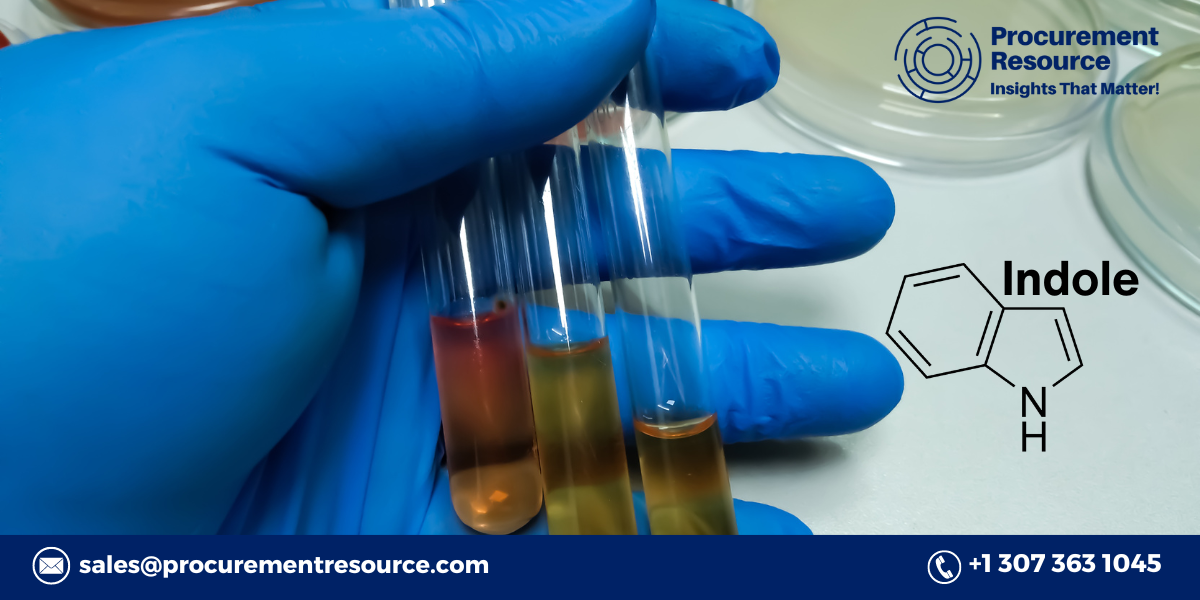
Indole is an organic compound that plays a vital role in various industrial applications, especially in the synthesis of pharmaceuticals, fragrances, and agrochemicals. It is a bicyclic structure consisting of a six-membered benzene ring fused to a five-membered nitrogen-containing pyrrole ring. This versatile molecule is naturally found in many plants and is also a byproduct of the bacterial breakdown of the amino acid tryptophan in the human gut.
Given the wide range of applications for indole, understanding the cost structure involved in its production is crucial for industries that depend on it. Whether you are a manufacturer, investor, or end-user, knowing the factors that influence indole production cost can provide insights into pricing, supply chain management, and strategic planning.
This article delves into the cost components of indole production, examining raw material costs, manufacturing processes, labor, energy consumption, and other factors that contribute to the overall cost. We will also explore the economic dynamics, technological advancements, and market conditions that influence indole production costs.
Raw Material Costs
A. Feedstocks
The primary raw materials used in the production of indole are derivatives of petrochemical feedstocks or plant-based biomass. The choice of raw material significantly affects the cost of production.- Petrochemical Feedstocks: These are commonly used due to their availability and cost-effectiveness. Benzene, for example, is a major starting material for the synthesis of indole. However, the cost of benzene is subject to fluctuations in global oil prices, which can affect the overall production cost of indole.
- Plant-Based Biomass: For those seeking a more sustainable approach, plant-based sources, such as indigo plants, can be used to extract indole. However, this method is typically more expensive due to the cost of cultivation, extraction, and purification processes. The variability in crop yields and agricultural practices also contributes to cost fluctuations.
B. Catalysts and Reagents
The synthesis of indole often requires the use of catalysts and other chemical reagents, which add to the production cost. For example, palladium catalysts are frequently used in the cyclization process to produce indole. The cost of these catalysts can be high, and their availability is subject to market conditions for precious metals. Additionally, the need for other reagents, such as acids or bases for reaction optimization, further adds to the raw material costs.C. Solvents
Solvents play a crucial role in the production of indole, particularly in the purification and extraction processes. Common solvents used include toluene, dichloromethane, and ethanol. The cost of solvents depends on the purity required, the volume used, and the ease of recovery and recycling in the production process. The environmental regulations governing the disposal and treatment of used solvents also impact the overall cost. Request For Free Sample: https://www.procurementresource.com/production-cost-report-store/indole/request-sampleManufacturing Process Costs
A. Synthesis Route
The cost of producing indole is highly dependent on the synthesis route chosen. Several methods exist, each with its advantages and drawbacks in terms of cost, yield, and complexity.- Fischer Indole Synthesis: This is one of the most common methods for producing indole. It involves the reaction of phenylhydrazine with ketones or aldehydes under acidic conditions. While this method is widely used due to its simplicity, it requires careful control of reaction conditions to optimize yields, which can add to the cost.
- Buchwald-Hartwig Amination: This modern method uses palladium-catalyzed cross-coupling reactions to produce indole from aryl halides and amines. While this method can offer higher yields and selectivity, the cost of palladium catalysts and the need for specialized equipment can make it more expensive.
- Biotechnological Methods: Advances in biotechnology have led to the development of microbial fermentation processes for indole production. These methods utilize genetically engineered bacteria or fungi to convert tryptophan into indole. While biotechnological methods are often more sustainable, they can be cost-prohibitive due to the need for fermentation facilities, culture media, and downstream processing.






